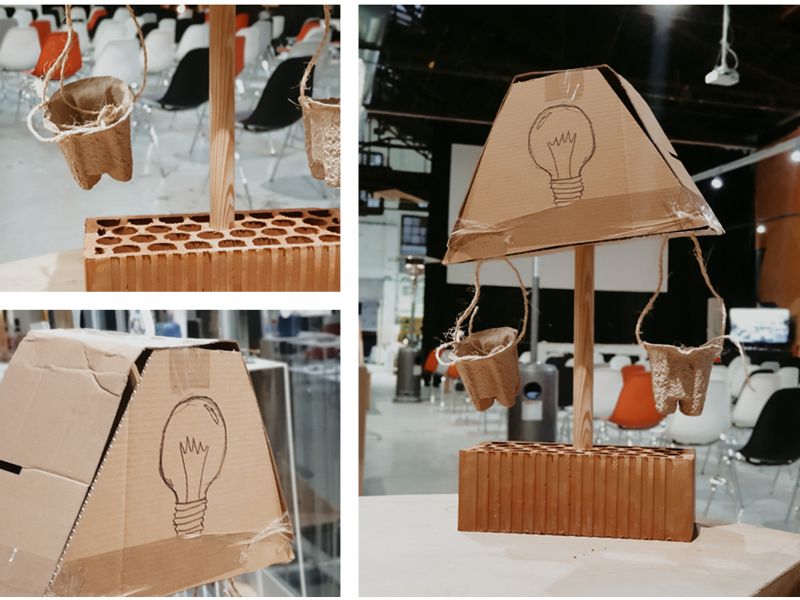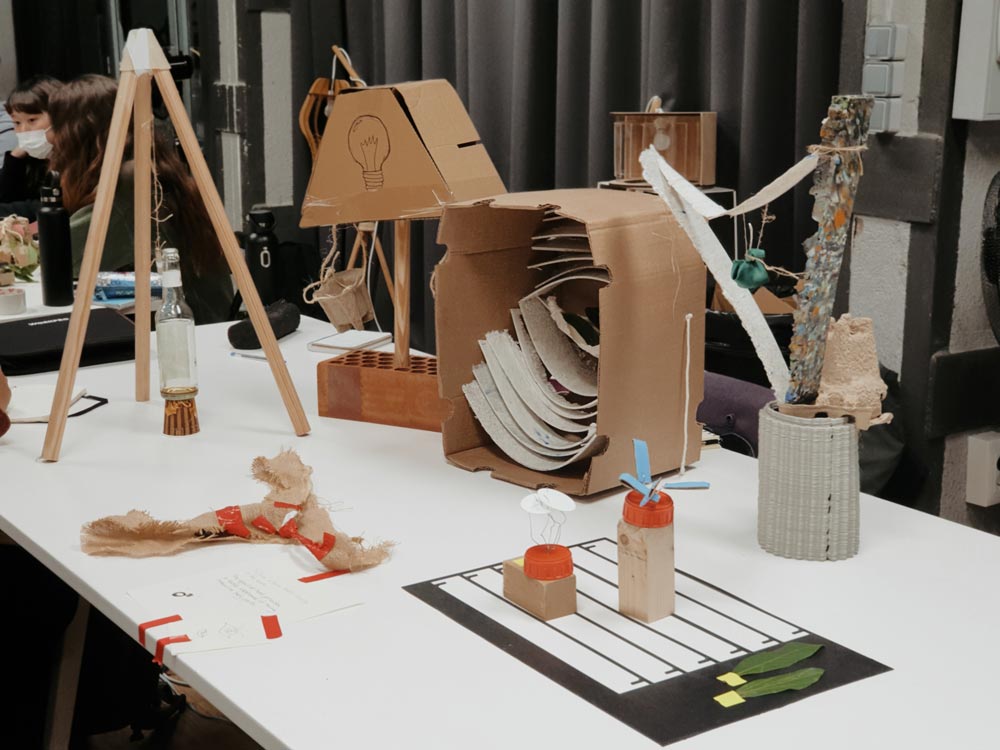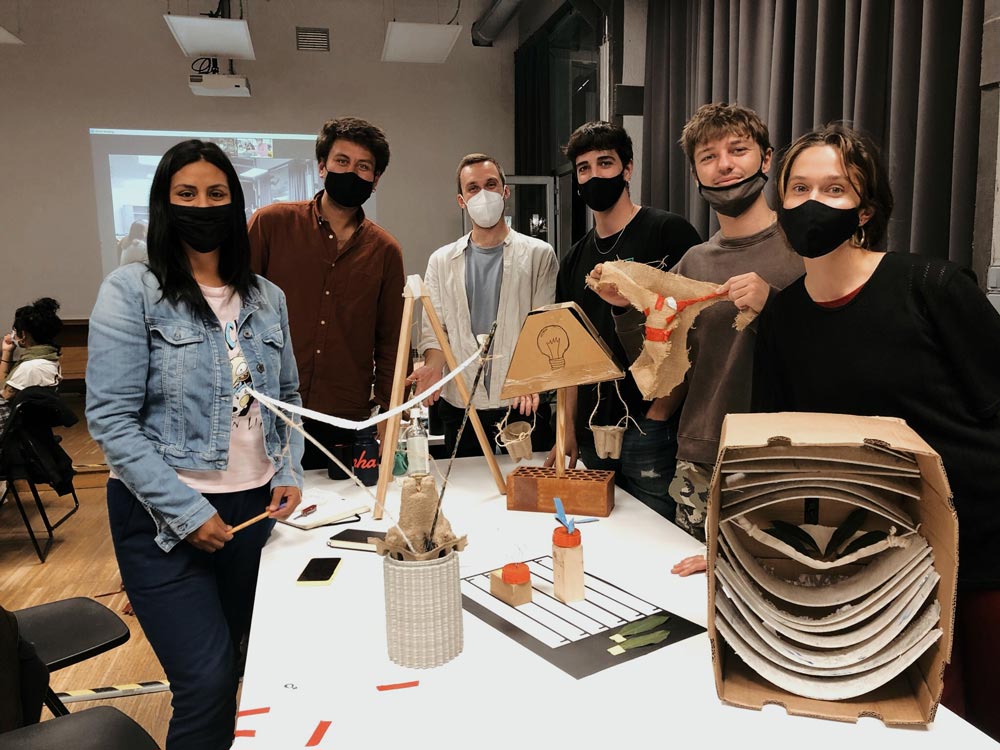/weekFive.living_with_your_own_ideas
(07_november_2021)
This week we attended the course tutored by Oscar Tomico, Kristina Andersen
and Angella Mackey, with the theme "Living with your own ideas". During this four-day
seminar, we had the opportunity to experience, through two workshops, what it means to
embody the concepts we have in our heads. We had to act and test instead of thinking
and hypothesising.
.make_a_magic_machine
In this initial workshop organised by Kristina Andersen, we first of all had to make
a drawing of ourselves (not literally, more conceptual) in less than a minute. That
drawing referred to the person we were going to design for that afternoon, Me. From
there, the next step was to start creating a "magic" machine with recycled materials
and objects. This machine could have any function we wanted and it didn't have to be
functional, it just had to have a reason why.
In my case, I used a brick, a wooden cylinder, a rope and some pieces of cardboard
to build the machine. The creation process was really curious: at the beginning I
had no idea what to do and it all seemed very random. As I analysed the materials it
all started to make sense and in this process of development I came up with more ideas
and concepts that gave purpose to my machine.

The Justice Lamp is the name I gave to my machine and it is a combination of a balance
and a lamp, where the light only turns on when the weight of the two sides is the same.
With this I wanted to make a metaphor about equality and justice, considering that only
when there is equilibrium there is light and hope. Also relating it to First Person
Perspective, only when you as a designer empathise and place yourself in the context
you design for, is when the light comes on, synonymous with a good idea.
After this, we were asked to try to relate our machine to the other machines on the table.
It was quite difficult to try to find common ground considering the huge diversity of
themes of the colleagues' constructions. Nevertheless, Kristina found convergence in the
generally social themes and very much related to empathy, either for other people or for
the elements of nature.


.embodying_my_ideas
The second workshop of the week carried out by Angella Mackey was totally different
from the first one. It consisted in experimenting for 24 hours what First Person
Perspective means, within the framework of our Design Space if possible. In this
short period of time we had to pose a question we wanted to explore and accompany
it with a personal experimentation exercise. In my case I chose the question "What
if some parts of our body were heavier?". This is the result:
As you can see in the video, what I did was to put weights on different parts of my
body and perform the same tasks that I usually do in my daily life. My main intention
was to find out how I would feel if some of my body parts were heavier, and also to
check if it would be comfortable or uncomfortable. Gathering this information was
relevant to my project as my idea focuses on wearables and prosthetics, and having
a sense of what it's like to have weight attached to your body is essential. Also
to empathise with those people who have to carry extra weight due to basic needs or
illnesses.
Clearly, putting yourself in the situation of your object of study is not only
beneficial for gaining first-hand knowledge of the context, but also brings spontaneous
and unexpected knowledge that you cannot get from working externally. Also, by being
the instrument yourself, you can empathise directly with your target and feel what
they feel. In my case, as I was already under a lot of stress, having to carry weights
was even more uncomfortable and tiring, which made me reflect even more on those people
who have no other choice. I was also able to experience how some of the weights placed
on my body had practically no effect on my mobility.
On the other hand, after this workshop I think I will start working more in this way,
but with more time and without recording myself. These two things are the ones that
have interfered the most in my experience and I think that if I had carried out the
experiment in other conditions it would have been more useful and enriching. Even so,
looking to the future, I certainly think I'm going to explore more what it means to
wear weights and I'm sure this will give me a clue as to where I need to go in the
world of wearables and prosthetics.
Finally, I feel that watching the experiences of my classmates has been a great
opportunity to get to know them better, to learn from them and to find out what their
interests and concerns are. Without a doubt, all of them are a source of inspiration
and, although I can't name a specific person with whom I could collaborate on a
thematic level, I would be delighted to be able to team up with any of them.